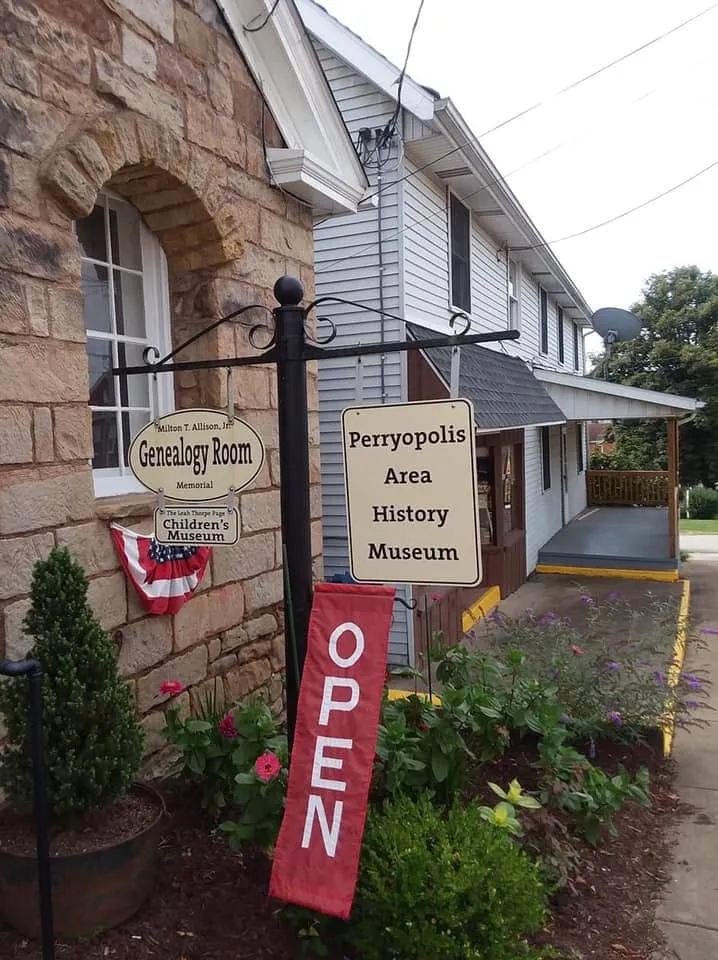The Youghiogheny (or Youghogeni) Bank of Pennsylvania (also known as Old State Bank) was built circa 1817 as one of the first formally organized banks in the western part of the state. The opening of this bank reflects the optimism of this fledgling community. The creation of the bank and Perryopolis was part of a larger speculative expansion of business, industry, transportation, and new towns in the trans-Appalachian west. This began in the early nineteenth century and was encouraged by several factors, including the opening of the Mississippi to free navigation and the Embargo Acts.
The boom ended with the depression of 1819 and the resulting failure of many business ventures, including the Youghiogheny Bank. Following the bank's failure, the building was utilized for various economic ventures. It was sold in 1821 to Benjamin Martin. The building remained in the Martin Family's ownership until 1928.
It housed a variety of tenants and uses, including an early (1820-1822) school, Methodist church services in the 1830s, John F. Martin's store and post office during the late 1800s and early I 900's, a pool room, a fruit stand, and a restaurant. In 1936, the existing renovations were completed, and the rear portion was added to accommodate the medical office and residence of Dr. William R. Vernon and his family. Vernon used the building for a medical office until 1960. After his retirement, Vernon and his wife resided in the building until 199l when it was sold to Perryopolis Borough. It is currently used as a museum maintained by the Perryopolis Area Heritage Society.
The Youghiogheny Bank appears to be part of a broader pattern of bank establishment beginning in circa 18l0. The first published notice of a meeting for stockholders was in the 1816 Uniontown newspaper, Genius of Liberty. Although the bank was not included in the first Pennsylvania state bank Act of 1814, which chartered 41 new banks, including two in Fayette and Greene counties, it was referred to in an 1819 act of the legislature, which gave certain legal powers to several Fayette County corporations, including the "Youghogeni Bank of Pennsylvania."In the Laws of Pennsylvania of 1824, a note to an act rechartering the state banks of 1814 reads: "The following banks became insolvent or otherwise forfeited their charters before the act in the text:...Youghoni (sic) Bank, Pennsylvania." (p.218) According to the 1964 Perryopolis Area Sesquicentennial Book, the building was also briefly the home to a bank during the administration of Andrew Jackson.
The Youghiogheny Bank building is utilitarian in style. It uses regional vernacular building techniques, such as constructing rough-coursed ashlar masonry. It is rectangular in plan and elevation, gable-roofed, and has regularly spaced window openings. No other stone bank buildings of this period exist in the region.
Commercial and industrial buildings in Perryopolis and its rural environs built before 1840 were rare enough that examples were remarked upon and recorded photographically late in the nineteenth century. Despite their antiquity and associations with other critical early figures and events, these buildings continued to be used for business until the twentieth century.The Youghiogheny Bank building was rehabilitated and enlarged in the 1930s as a doctor's office and residence. It remains a tangible link to important early commercial history and a representative example of ashlar stone construction.
Return to

Perryopolis, PA 15473